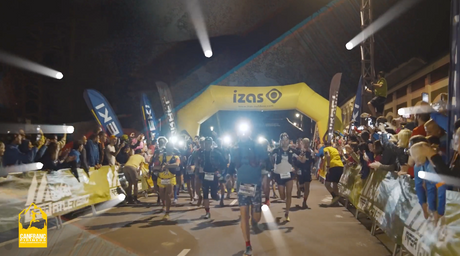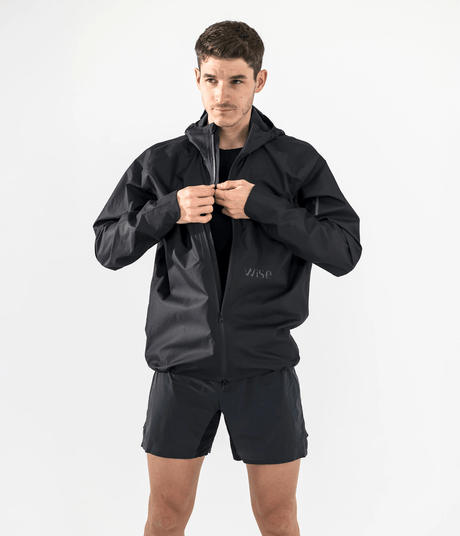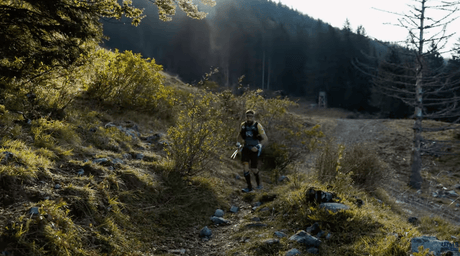As soon as you start reading about the trails you will come across all kinds of trail running terms or hiking terms. What do they all mean? You can find them in our Trail Running Glossary or Trailrun FAQ.
Hiking and Trail Running Glossary
A
- Aerobic Capacity: The body's ability to use oxygen during activity.
- Aid Station: A stop during a trail run with water, food and medical assistance.
- Alpine: The mountainous area above the tree line.
- Altitude Sickness: Symptoms due to high altitude, such as headache and nausea.
- Altitude Training: Training at high altitude to improve endurance.
- Avalanche Beacon: A device to share your location in case of an avalanche.
B
- Backpacking: Long-distance hiking with overnight stays.
- balaclava: A face mask that covers the head and neck for protection against cold.
- Base Layer: The first layer of clothing, which wicks away moisture and insulates.
- Bear Bell: A bell that rings to scare away bears.
- Bear Canister: A container to safely store food and keep bears away.
- Bear Country: Areas where bears are present and extra precautions are needed.
- Bear Encounter: An encounter with a bear during a hike.
- Bear Spray: A deterrent to ward off bears during hikes.
- Bear-Proof Container: A bear-proof container used to store food.
- Bear-Resistant Food Storage: Safely storing food to keep bears away.
- Bivouac: Spending a night in the open air without a tent.
- Bivy Sack: A small, lightweight sleeping bag for emergencies or ultralight trips. Order it here.
- Blaze Orange: Bright orange clothing worn during hunting season for visibility.
- Blister: A painful area on the skin caused by friction or irritation.
- Buff: Spanish brand of neck warmers. Other brands are often called Buff. They also make beanies and headbands. View the collection here.
C
- Crampons: Metal spikes that are attached to shoes for grip on ice and snow.
D
- Day Hike: A walk that can be completed in one day, usually without an overnight stay.
- Downhill: Walking down a hill or mountain.
E
- Elevation Gain: The total number of meters climbed during a hike.
- Elevation Loss: The total number of meters descended during a hike.
- Emergency Shelter: A temporary shelter for emergencies.
- Emergency Whistle: A whistle to call for help in an emergency.
G
- Gaiters: Protective covers for shoes to keep out dirt and snow.
- Geocaching: A treasure hunt game with GPS coordinates.
- Geotagging: Adding GPS coordinates to photos or notes during a hike.
- Gore-Tex: A waterproof and breathable material used in outdoor clothing.
- GPS: Global Positioning System, used for navigation on trails.
- Granite: A common type of rock in mountainous areas.
H
- Half Marathon: A race of 21.0975 km.
- Hiking Boots: Sturdy shoes with ankle support for hikes.
- Hiking: Walking in nature, often on trails and mountain paths.
- Hydration Bladder: A flexible pocket in a backpack for drinking water. View our collection here.
- Hydration Pack: A backpack with a water reservoir for hydration on the go. View our collection here.
- Hypothermia: Hypothermia due to cold temperatures. Take your thermal blanket along.
- Hypoxic: A condition of insufficient oxygen, often at high altitude.
J
- Jetboil: A compact burner to boil water during hikes.
L
- Leave No Trace: A code of ethics to protect nature during outdoor activities.
- Long-Distance Trail: A trail that extends over long distances.
M
- Map and Compass: Traditional navigation tools for hiking and trail running.
- Map Legend: A key that explains the symbols and colors on a card.
- Marathon: A race of 42.195 km.
- Microspikes: Lightweight spikes for grip on slippery trails.
N
- National Park: A protected natural area that promotes recreation and conservation.
- Navigation Skills: Skills to navigate using map, compass or GPS.
O
- Obstacle Run: A kind of trail run, but with obstacles. Read all about it on Obstacles.com.
P
- Packing List: A list of equipment and clothing required for a hike.
- Permafrost: Permanently frozen ground in cold climates.
- Permit: A permit that is sometimes required for access to certain trails. In the Netherlands required in some dune areas.
R
- Ridge: A narrow peak or line on a mountain.
- Rock Slide: A sudden movement of stones or rocks on mountains.
- Route Finding: Navigating and choosing the right route on a trail.
S
- Scenic Byway: A scenic route through nature reserves.
- Scenic Overlook: A lookout point with a panoramic view of the surroundings.
- Scrambling: Climbing over rocks and rough terrain without climbing equipment.
- Scree: Loose, gravelly stones on mountain trails.
- Section Hike: A long-distance hike completed in separate sections.
- Shelter: A protective structure such as a tent or tarp.
- Sun Protection: Sun protection such as hats and sunscreen.
- Sunscreen: Sunscreen to protect the skin from the sun.
- Survival Skills: Wild survival skills such as making fire and building shelter.
- Switchback: A zigzag path that goes up or down to overcome steep slopes.
T
- Tarp Shelter: A simple shelter made from a tarp.
- Tarp: A lightweight, portable emergency shelter.
- Technical Terrain: Rugged and challenging terrain requiring technical skills.
- Tent Stakes: Pegs for securing tents.
- Thermal Layer: Clothing for insulation and warmth in cold conditions. View all our thermal products here.
- Thermos: An insulated bottle for hot or cold drinks.
- Thru-Hike: A long-distance hike from end to end of a trail, such as the Appalachian Trail.
- Topographic Map: A detailed map showing contour lines and landscape features.
- Trail Etiquette: Rules of conduct for sharing trails with others.
- Trail Food: Food that is easy to carry and eat while hiking.
- Trail Marker: Markings such as paint, ribbon or signs that indicate the trail.
- Trail Running: A form of running that takes place on unpaved trails and in natural environments.
- Trail Shoes: Shoes specially designed for trail running or hiking.
- Trail: A narrow path in nature, usually intended for walking, trail running or cycling.
- Trailhead: The starting point of a trail.
- Trekking Poles: Poles used for balance and support during hikes.
- Draw: A multi-day hike, often in remote areas.
YOU
- Ultra Running: Longer distance trail running races, usually longer than a marathon.
- Ultra-Light: Lightweight gear and clothing to save weight during hikes.
- Ultralight Backpacking: Backpacking with minimal gear to save weight.
- Ultramarathon: A long-distance race, usually longer than 42.195 km.
- Uphill: Walking up a hill or mountain.
V
- Vertical Kilometer (UK): A race that covers a vertical kilometer with a lot of elevation.
W
- Water Crossing: Crossing a stream, river or creek during a hike or trail run.
- Water Filter: A device for purifying water from natural sources for consumption.
- Wicking: The ability of clothing to wick moisture away from the skin.
- Wilderness Area: A protected nature reserve without paved roads.
- Wilderness First Aid: First aid skills for wilderness emergencies.
- Wilderness Medicine: Medical care in remote areas.
- Wildlife Viewing: Observing animals in their natural environment.
- Windbreaker: A light jacket that protects against wind and light rain.
Conclusion Trail Running Glossary
If you read this list you will see that there are many terms in the world of trails. Hopefully you have gained some clarity. Are you missing something on our Trail Running Glossary? Let us know!






